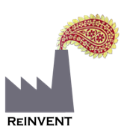 ReINVENT: reconnecting and recreating 19th century Scottish textile manufacture
ReINVENT: reconnecting and recreating 19th century Scottish textile manufacture
ReINVENT is a novel knowledge exchange project that brings together a unique cross-disciplinary group of academics and practitioners in arts, humanities, science and engineering to reconnect material culture evidence from historical artefacts with science and engineering evidence from historical technology.
Information about well-known and forgotten nineteenth century manufacturing practices for Scottish textiles of the Industrial Revolution will be shared between the collaborators and invited experts. Three cross-disciplinary workshops will explore the interpretation and preservation of collection of historical textile and technology, and recreations of historical industrial practices.
The primary focus will be on three iconic Scottish textiles: Paisley and Edinburgh shawls; Turkey red printed cotton; and Stoddard-Templeton carpets. A better understanding of the energy, tools and equipment needed by Scottish manufacturers to make these products will provide a clearer idea of the processes and their impact on quality and design. Through this insight, the innovations and inventiveness of nineteenth century Scotland and the essential role of manufacturing in economies of the modern age will be highlighted.
Outcomes from the workshop are to be shared with interested researchers and practitioners in an open invitation public event. This aims to stimulate knowledge exchange between the workshop collaborators and interested academic, private and public researchers and enthusiasts including museums, archives, and historical trusts and societies. The event leads to meaningful research directions for future collaborations and a publically-shared inventory of Scottish industrial heritage initiated as testament to the lasting legacy of Scotland’s worldwide reputation for manufacturing innovation.
Duration: 25 March 2013 – 24 March 2014
Workshops
Workshop 1, 29th April 2013
Materials and supplies for textile production
The textile industry relied on supplies of yarns and fabrics, techniques for weaving and processing fabrics, and chemicals for preparing, bleaching, dyeing, printing and finishing. What was available? What was needed? What production stages were necessary to make or prepare the supplies?
For further information on this workshop please click here.
Workshop 2, 21st June 2013
National Museum Scotland, Edinburgh
Equipment and tools for textile production
Weaving looms, printing equipment and dyeing vessels are just some of the essential equipment for textile production. What were other equipment, large and small, was necessary for specific purposes relating to the making and use of materials discussed in Workshop 1? Where would these come from? Could they have been made in Scotland? What materials would they have been made from?
For further information, please click here.
Workshop 3, 27th September 2013
Summerlee Industrial Museum, Coatbridge
Power for textile production
Power sources were essential for driving machinery, heating chemicals, applying designs and finishing textiles. What level of power was necessary for the equipment and material production identified in Workshops 1 and 2? Would power be created by the manufacturer for themselves or from centralised sources? How would the power sources affect the working environment and could this be important to manufacturing processes, for example high moisture from steam or dry conditions from high temperatures?
Public Seminar, December 2013
University of Glasgow
Travel grants will be available for 4 to 5 chairs of significant Scottish groups or trusts to attend, with applications from local history groups especially encouraged to apply. Postgraduate researchers are invited to present posters on their research, with bursaries available for travel and up to £50 towards poster costs. Please contact Anita Quye anita.quye@glasgow.ac.uk with enquiries and for further details.
Launch of the inventory, February 2014
Collaborators
Dr Anita Quye (Principal Investigator), Lecturer in Conservation Science, Centre for Textile Conservation and Technical Art History, School of Culture and Creative Arts, University of Glasgow
Dr Klaus Staubermann (Co Investigator), Principal Curator of Technology, National Museums Scotland
Dan Coughlan, Curator of Textiles, Paisley Museum and Art Gallery
Elsa Davidson, Curator of Technology, National Museums Scotland
Professor Sean Johnston, School of Interdisciplinary Studies (Science, Technology and Society), University of Glasgow
Andrew Kerr, Edinburgh World Heritage Trust
Justin Parkes, Industrial History Curator, Summerlee Museum of Industrial Life, Coatbridge and Vice Chair of the Scottish Transport and Industrial Collections (STICK) subject specialist network
Rebecca Quinton, Curator of European Costume and Textiles, Glasgow Museums, Glasgow Life and Honorary Senior Research Fellow, History of Art, University of Glasgow
Linda Ross, Curator, Scottish Maritime Museum, Dumbarton
Sally Tuckett, Postdoctoral Researcher, University of Edinburgh
Jacqueline McKie, Administrator
Links
- STICK (Scottish Transport and Industrial Collections subject specialist network)
- Research Network for Textile Conservation, Dress and Textile History and Technical Art History, University of Glasgow
- GU ReINVENT 2013 Intro
Link: https://www.youtube.com/watch?v=5bsBRSUW_38 - GU ReINVENT 2013 James Robinson
Link: https://www.youtube.com/watch?v=3c5A-ewYpro - GU ReINVENT 2013 Professor John Hume
Link: https://www.youtube.com/watch?v=688beFxt924 - GU ReINVENT 2013 Dr Panu Nykanen
Link: https://www.youtube.com/watch?v=0US2WirxoIM - GU ReINVENT 2013 Melvyn Thompson
Link: https://www.youtube.com/watch?v=zU9GLJThLu8 - GU ReINVENT 2013 David Harvie
Link: https://www.youtube.com/watch?v=f30SSMypTjk - GU ReINVENT 2013 Impact
Link: https://www.youtube.com/watch?v=dFnu4BkgZTs - GU ReINVENT 2013 Next Steps
Link: https://www.youtube.com/watch?v=2WXIzEY7UHQ - ERIH http://www.erih.net
Join our group in LinkedIn - 'ReINVENT: Knowledge Exchange Network'. For further information, please contact Jacqueline.mckie@glasgow.ac.uk
Funders
The Royal Society of Edinburgh
The Scottish Government
Contact
Jacqueline McKie, Administrator



